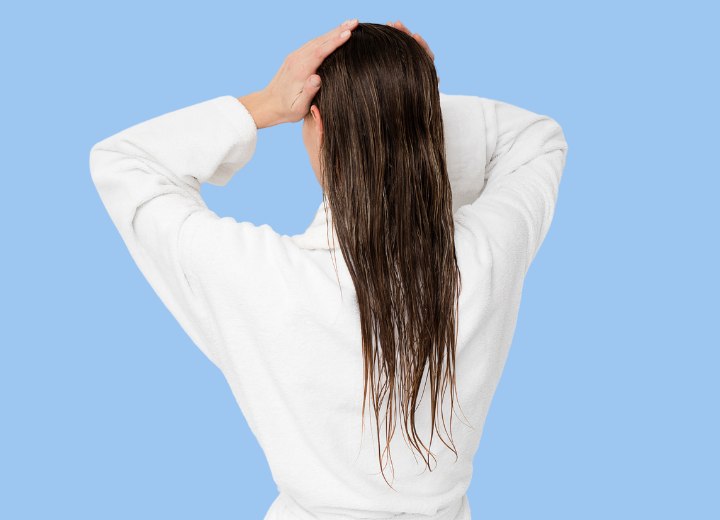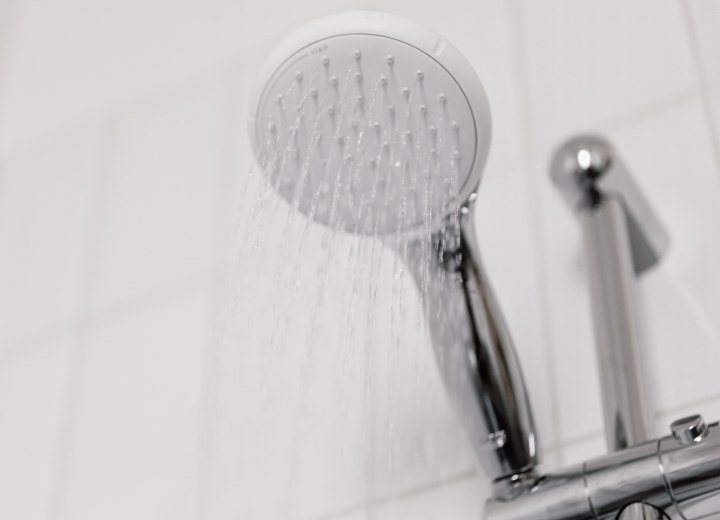Basic Hair Care (3)

Work your fingers through your hair to "comb" it from the scalp area to the ends. If you have very long hair, you may need to get a little more conditioner to fully cover the ends.
Allow the conditioner to sit on the hair for the amount of time directed by the packaging. This is usually one minute for most rinse-through conditioners, though it may be up to 3 to 5 minutes for some of the more moisture-rich conditioners. When the conditioner has been on for the required length of time, rinse it thoroughly from the hair.
Once again, be sure to rinse the hair completely, running your fingers through the hair to help push out the lather and make sure that you get all the shampoo off the scalp as well.

It's always important to thoroughly rinse shampoos and conditioners from the hair after using them. Shampoos contain surfactants that can cause the scalp to feel dry and itchy if not thoroughly rinsed away, and conditioners can result in the hair looking flat and limp if not rinsed properly.
A good conditioner will have properly moisturized the hair and smoothed the cuticle layer during the time it sits on the hair. You don't need to be able to feel the conditioner residue to have gotten the proper effect.
Drying:
Now we come to the step where most people do the most harm to their hair. It's astonishing how brutal some people are when they towel-dry their hair. A friend of mine used to complain to me that he couldn't understand why his hair kept coming out in his hairbrush.
One day while waiting for him to get ready to go to a movie, I watched him dry his hair after a shower (his hair is shoulder-length) and he laid the towel over his head and proceeded to act as though he were trying to buff his scalp. He rubbed the towel over his head (and his hair) so vigorously that when he removed the towel he looked as though he'd been through a wind tunnel.
He then proceeded to grab his hairbrush and rake it through the knotted mass he'd just created. I winced as I could actually hear the strands of hair "snapping" as they broke off. Amazingly, this is not an uncommon problem. I've noticed similar abuses among several of my clients, who are all apparently unaware of the damage they are causing and don't know how to properly dry their hair.

You can massage the towel on the scalp area, but use only your fingertips and very small movements (less than half an inch [or 1.5 cm]). Ideally, you should wrap your hair up into the towel and leave it there for 10 to 15 minutes. While your hair is turbaned, you can dry the rest of your body and do other things, like getting dressed.
This does mean that you'll need to use more than one towel, but the benefit is that your hair will be much easier to style, especially if you have very long hair, which can become knotted and matted when wet if not treated gently. Once the hair has had time for the towel to absorb the water, take down the turban and use a wide-toothed comb, working from the ends of the hair upward to comb out the damp hair until it is smooth.
It's always recommended that you use a wide-tooth comb to detangle damp hair. It provides even, low tension to separate tangled strands. Some people have been known to use "pronged" brushes, but unless the prongs of the brush are spaced sufficiently, you can end up with the hair being directed in multiple directions at once, which can result in breakage. A comb with widely-spaced teeth is a much safer choice.
At this point, your hair is ready for styling, and we can cover the common mistakes of the varied styling processes at another time.
©Hairfinder.com
See also:
How to detangle knotted hair
How to comb and brush your hair properly
How to save on haircuts and hair care
Home remedies for healthy hair